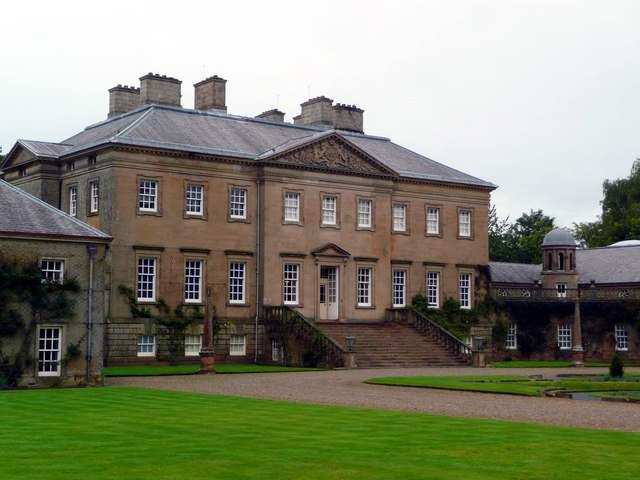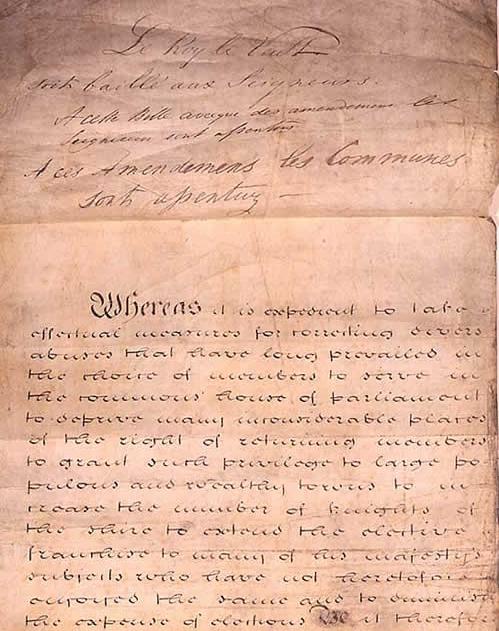|
Kilvrough Manor
Kilvrough Manor is a large country house near Swansea. It is a Grade II* listed building. Its park is listed on the Cadw/ICOMOS Register of Parks and Gardens of Special Historic Interest in Wales. History The house was built for Rowland Dawkin, a member of the Gower family, in 1585. In 1820, Major Thomas Penrice of Great Yarmouth acquired the manor: in June 1831 he was ordered by the Marquess of Bute, Lord Lieutenant of Glamorgan, to tackle civil unrest associated with the Reform Bill. To his huge embarrassment, Penrice and his Yeomanry troops were disarmed by a large mob of rioters and, following an official inquiry, the local Yeomanry unit was re-organised by the Government. The house passed to Penrice's nephew and, through the nephew's daughter, to the Lyons family The Lyons family (originally styled de Lyons, or de Leonne, Lyonne, and also spelled Lyon) is an eminent Anglo-Norman family descended from Ingelram de Lyons, Lord of Lyons, who arrived in England with the Nor ... [...More Info...] [...Related Items...] OR: [Wikipedia] [Google] [Baidu] |
Swansea
Swansea (; cy, Abertawe ) is a coastal city and the second-largest city of Wales. It forms a principal area, officially known as the City and County of Swansea ( cy, links=no, Dinas a Sir Abertawe). The city is the twenty-fifth largest in the United Kingdom. Located along Swansea Bay in southwest Wales, with the principal area covering the Gower Peninsula, it is part of the Swansea Bay region and part of the historic county of Glamorgan; also the ancient Welsh commote of Gŵyr. The principal area is the second most populous local authority area in Wales with an estimated population of 246,563 in 2020. Swansea, along with Neath and Port Talbot, forms the Swansea Urban Area with a population of 300,352 in 2011. It is also part of the Swansea Bay City Region. During the 19th-century industrial heyday, Swansea was the key centre of the copper-smelting industry, earning the nickname ''Copperopolis''. Etymologies The Welsh name, ''Abertawe'', translates as ''"mouth/ ... [...More Info...] [...Related Items...] OR: [Wikipedia] [Google] [Baidu] |
Listed Building
In the United Kingdom, a listed building or listed structure is one that has been placed on one of the four statutory lists maintained by Historic England in England, Historic Environment Scotland in Scotland, in Wales, and the Northern Ireland Environment Agency in Northern Ireland. The term has also been used in the Republic of Ireland, where buildings are protected under the Planning and Development Act 2000. The statutory term in Ireland is "protected structure". A listed building may not be demolished, extended, or altered without special permission from the local planning authority, which typically consults the relevant central government agency, particularly for significant alterations to the more notable listed buildings. In England and Wales, a national amenity society must be notified of any work to a listed building which involves any element of demolition. Exemption from secular listed building control is provided for some buildings in current use for worsh ... [...More Info...] [...Related Items...] OR: [Wikipedia] [Google] [Baidu] |
Cadw/ICOMOS Register Of Parks And Gardens Of Special Historic Interest In Wales
The Cadw/ICOMOS Register of Parks and Gardens of Special Historic Interest in Wales is a heritage register of significant historic parks and gardens in Wales. It is maintained by Cadw, the historic environment service of the Welsh Government. The Register The Register was completed in 2002, but new sites continue to be added. Sites are classed into grades I, II* and II, according to their importance, in the same way as listed buildings. The Register currently includes just under 400 sites, of which 10 per cent grade I and 23 per cent are grade II*. Grade I listed sites The following list includes all registered sites listed at Grade I. Other parts of the United Kingdom Separate registers of parks, gardens and designed landscapes are maintained in the other countries of the United Kingdom: * The National Register of Historic Parks and Gardens, Register of Historic Parks and Gardens of special historic interest in England is maintained by English Heritage * The Inventory of Gar ... [...More Info...] [...Related Items...] OR: [Wikipedia] [Google] [Baidu] |
Great Yarmouth
Great Yarmouth (), often called Yarmouth, is a seaside resort, seaside town and unparished area in, and the main administrative centre of, the Borough of Great Yarmouth in Norfolk, England; it straddles the River Yare and is located east of Norwich. A population of 38,693 in the 2011 Census made it Norfolk's third most populous. Its fishing industry, mainly for herring, shrank after the mid-20th century and has all but ended. North Sea oil from the 1960s supplied an oil-rig industry that services offshore natural gas rigs; more recently, offshore wind power and other renewable energy industries have ensued. Yarmouth has been a resort since 1760 and a gateway from the Norfolk Broads to the North Sea. Holiday-making rose when a railway opened in 1844, bringing easier, cheaper access and some new settlement. Wellington Pier opened in 1854 and Britannia Pier in 1858. Through the 20th century, Yarmouth boomed as a resort, with a promenade, pubs, trams, fish-and-chip shops, theatr ... [...More Info...] [...Related Items...] OR: [Wikipedia] [Google] [Baidu] |
John Crichton-Stuart, 2nd Marquess Of Bute
John Crichton-Stuart, 2nd Marquess of Bute, KT, FRS (10 August 1793 – 18 March 1848), styled Lord Mount Stuart between 1794 and 1814, was a wealthy aristocrat and industrialist in Georgian and early Victorian Britain. He developed the coal and iron industries across South Wales and built the Cardiff Docks. Bute's father, John, Lord Mount Stuart, died a few months after he was born and as a young child he was brought up first by his mother, the former Lady Elizabeth McDougall-Crichton, and later by his paternal grandfather, John Stuart, 1st Marquess of Bute. He travelled widely across Europe before attending Cambridge University. He contracted an eye condition and remained partially sighted for the rest of his life. Having inherited large estates across Britain, he married his first wife, Lady Maria North, in 1818, and together they lived a relatively secluded life in Mount Stuart House in Scotland, one of Bute's four seats. Bute was dour but industrious, with a flair for ... [...More Info...] [...Related Items...] OR: [Wikipedia] [Google] [Baidu] |
Lord Lieutenant Of Glamorgan
This is a list of people who served as Lord Lieutenant of Glamorgan. After 1729, all Lords Lieutenant were also Custos Rotulorum of Glamorgan. The post was abolished on 31 March 1974. Lord Lieutenants of Glamorgan to 1974 *Henry Herbert, 2nd Earl of Pembroke 24 February 1587 – 19 January 1601 * Edward Somerset, 4th Earl of Worcester 17 July 1602 – 3 March 1628 ''jointly with'' *Henry Somerset, 5th Earl of Worcester 3 December 1626 – 9 May 1629 * William Compton, 1st Earl of Northampton 9 May 1629 – 24 June 1630 *John Egerton, 1st Earl of Bridgwater 11 July 1631 – 1642 *''Interregnum'' *Richard Vaughan, 2nd Earl of Carbery 22 December 1660 – 20 July 1672 *Henry Somerset, 1st Duke of Beaufort 20 July 1672 – 22 March 1689 *Charles Gerard, 1st Earl of Macclesfield 22 March 1689 – 7 January 1694 *Thomas Herbert, 8th Earl of Pembroke 11 May 1694 – 2 October 1715 *''vacant'' * Charles Powlett, 3rd Duke of Bolton 13 January 1729 – 26 August 1754 * Other Windsor, 4th E ... [...More Info...] [...Related Items...] OR: [Wikipedia] [Google] [Baidu] |
Reform Act 1832
The Representation of the People Act 1832 (also known as the 1832 Reform Act, Great Reform Act or First Reform Act) was an Act of Parliament of the United Kingdom (indexed as 2 & 3 Will. IV c. 45) that introduced major changes to the electoral system of England and Wales. It abolished tiny districts, gave representation to cities, gave the vote to small landowners, tenant farmers, shopkeepers, householders who paid a yearly rental of £10 or more, and some lodgers. Only qualifying men were able to vote; the Act introduced the first explicit statutory bar to women voting by defining a voter as a male person. It was designed to correct abuses – to "take effectual Measures for correcting divers Abuses that have long prevailed in the Choice of Members to serve in the Commons House of Parliament". Before the reform, most members nominally represented boroughs. The number of electors in a borough varied widely, from a dozen or so up to 12,000. Frequently the selection of Me ... [...More Info...] [...Related Items...] OR: [Wikipedia] [Google] [Baidu] |
Lyons Family
The Lyons family (originally styled de Lyons, or de Leonne, Lyonne, and also spelled Lyon) is an eminent Anglo-Norman family descended from Ingelram de Lyons, Lord of Lyons, who arrived in England with the Norman Conquest, and from his relation, Nicholas de Lyons, who emigrated from Normandy to England in 1080 and was granted lands at Warkworth, Northamptonshire by William of Normandy. The family originated in the district of the Forest of Lyons, north of the town of Lyons-la-Forêt, in Haute Normandie, where their seat was the Castle of Lyons. The original surname was 'de Lyons' ('of he Forest and Castleof Lyons'): subsequently, the 'de' was removed from the name, and some branches removed the 's' from the end of the word, producing 'Lyon'. During the 14th century, a branch of the family emigrated to Scotland, where they became Clan Lyon, the Lords of Glamis, and the Earls of Strathmore and Kinghorne. During the 15th century, a branch of the family emigrated to Ireland, ... [...More Info...] [...Related Items...] OR: [Wikipedia] [Google] [Baidu] |
Algernon Lyons
Admiral of the Fleet Sir Algernon McLennan Lyons (30 August 1833 – 9 February 1908) was a senior Royal Navy officer who served as First and Principal Naval Aide-de-Camp to Queen Victoria. Lyons also served as Commander-in-Chief, Pacific Station, Commander-in-Chief, North America and West Indies Station, and then Commander-in-Chief, Plymouth. He was the nephew of the eminent Admiral Edmund Lyons, 1st Baron Lyons, who served as Commander-in-Chief of the Mediterranean Fleet, under whom he served for a time, and the cousin of Richard Lyons, 1st Viscount Lyons, and Richard Lyons Pearson, Assistant Commissioner of the Metropolitan Police. Family Lyons was born at Bombay on 30 August 1833. He was the second son of Lieutenant General Humphrey Lyons (1833–1908) and his first wife, Eliza, daughter of Henry Bennett. Lyons's uncle was Edmund Lyons, 1st Baron Lyons, via whom he was the cousin of Richard Lyons, 1st Viscount Lyons. He was also the cousin of Richard Lyons Pearson, ... [...More Info...] [...Related Items...] OR: [Wikipedia] [Google] [Baidu] |
Country Houses In Wales
A country is a distinct part of the world, such as a state, nation, or other political entity. It may be a sovereign state or make up one part of a larger state. For example, the country of Japan is an independent, sovereign state, while the country of Wales is a component of a multi-part sovereign state, the United Kingdom. A country may be a historically sovereign area (such as Korea), a currently sovereign territory with a unified government (such as Senegal), or a non-sovereign geographic region associated with certain distinct political, ethnic, or cultural characteristics (such as the Basque Country). The definition and usage of the word "country" is flexible and has changed over time. ''The Economist'' wrote in 2010 that "any attempt to find a clear definition of a country soon runs into a thicket of exceptions and anomalies." Most sovereign states, but not all countries, are members of the United Nations. The largest country by area is Russia, while the smallest i ... [...More Info...] [...Related Items...] OR: [Wikipedia] [Google] [Baidu] |
Grade II* Listed Buildings In Swansea
In the United Kingdom, the term listed building refers to a building or other structure officially designated as being of special architectural, historical, or cultural significance; Grade II* structures are those considered to be "particularly important buildings of more than special interest". Listing was begun by a provision in the Town and Country Planning Act 1947. Once listed, strict limitations are imposed on the modifications allowed to a building's structure or fittings. In Wales, the authority for listing under the Planning (Listed Buildings and Conservation Areas) Act 1990 rests with Cadw. Buildings See also * Grade I listed buildings in Swansea * Listed buildings in Wales This is a list of listed buildings in Wales, which are among the listed buildings of the United Kingdom. Key The organization of the lists is on the same basis as the statutory register. County names are those used in the register, which in t ... ... [...More Info...] [...Related Items...] OR: [Wikipedia] [Google] [Baidu] |







.jpg)
